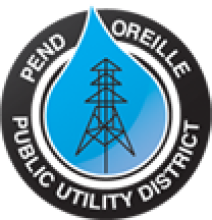Fiber-optic Community Broadband Service in the Washington State Wilderness
The Spokane Business Journal recently wrote about the community broadband system in Pend Oreille County, long a favored destination for all seasons outdoor recreation. Beginning in 2013, the Pend Oreille County Public Utility District (PUD) began providing residents and tourists with high-speed fiber to the premises broadband via a 573-mile fiber network. The network was made possible by a $27 million American Recovery and Reinvestment Act (ARRA) grant.
Private companies commonly say that such rural areas are not densely populated enough to justify investing in high-speed broadband infrastructure, leaving many rural communities on the disadvantaged side of the digital divide. High-speed community broadband systems like the one in Pend Oreille County cancel out this potential problem as they allow tourists, residents, and businesses alike to be closely connected with nature while staying connected for business demands. Indeed, as the website for Pend Oreille County’s Economic Development Council makes clear, the community broadband service is at the core of the county’s ambitious plans to attract people and businesses to the area.
In our recent report, ”All Hands On Deck: Minnesota Local Government Models for Expanding Fiber Internet Access,” we wrote about rural communities in Minnesota like Cook County where the tourist industry is a large part of the local economy. As in Pend Oreille, insufficient Internet negatively impacted resorts, lodges, and outfitters that depended on customers who needed more than dial-up Internet access. To solve their problem, they invested in a municipal fiber network.
Local community and business leaders report that they have also started to see people and businesses relocating to the county, encouraged by the area’s combination of fiber-optic broadband and outdoor recreation offerings.



